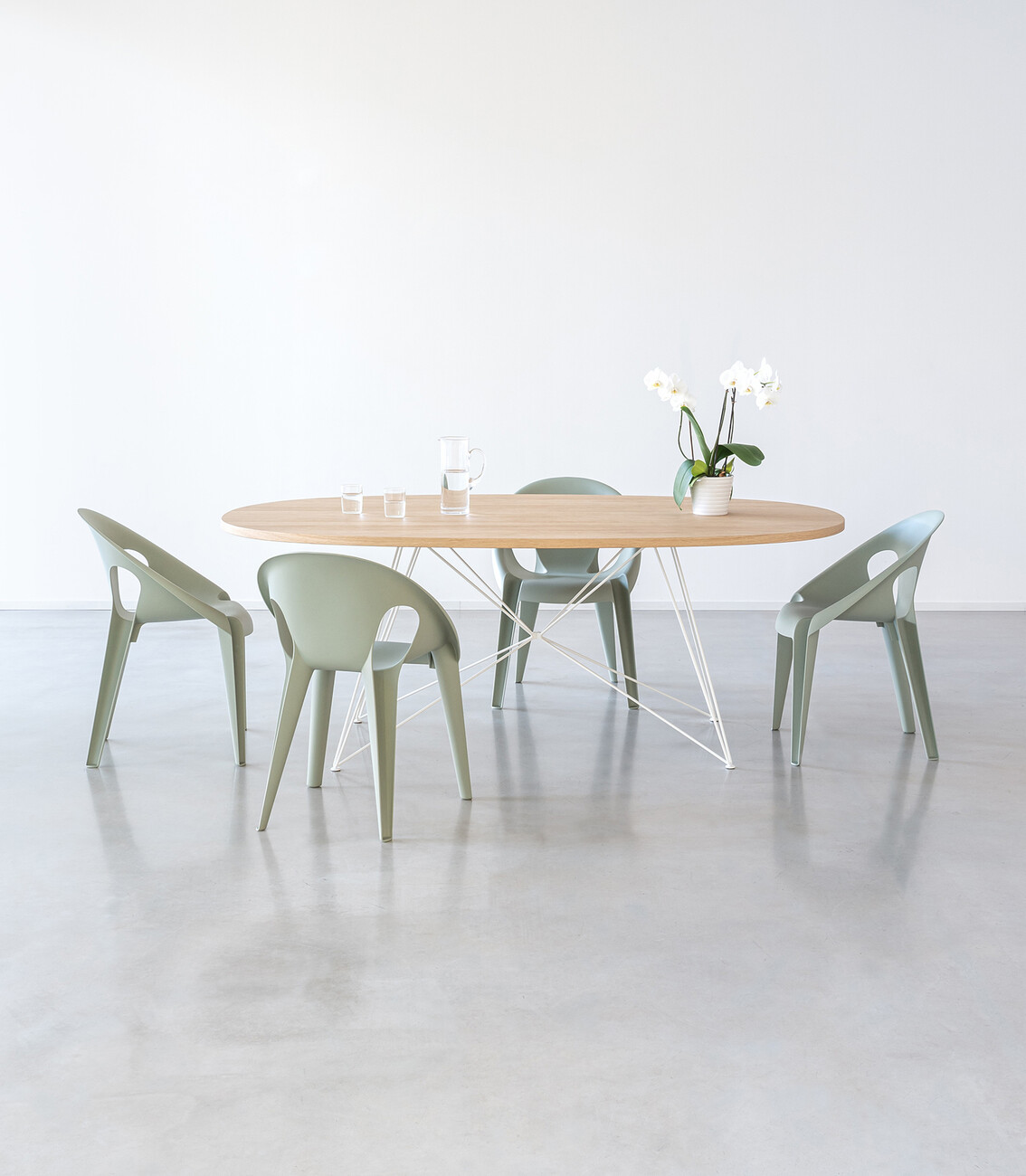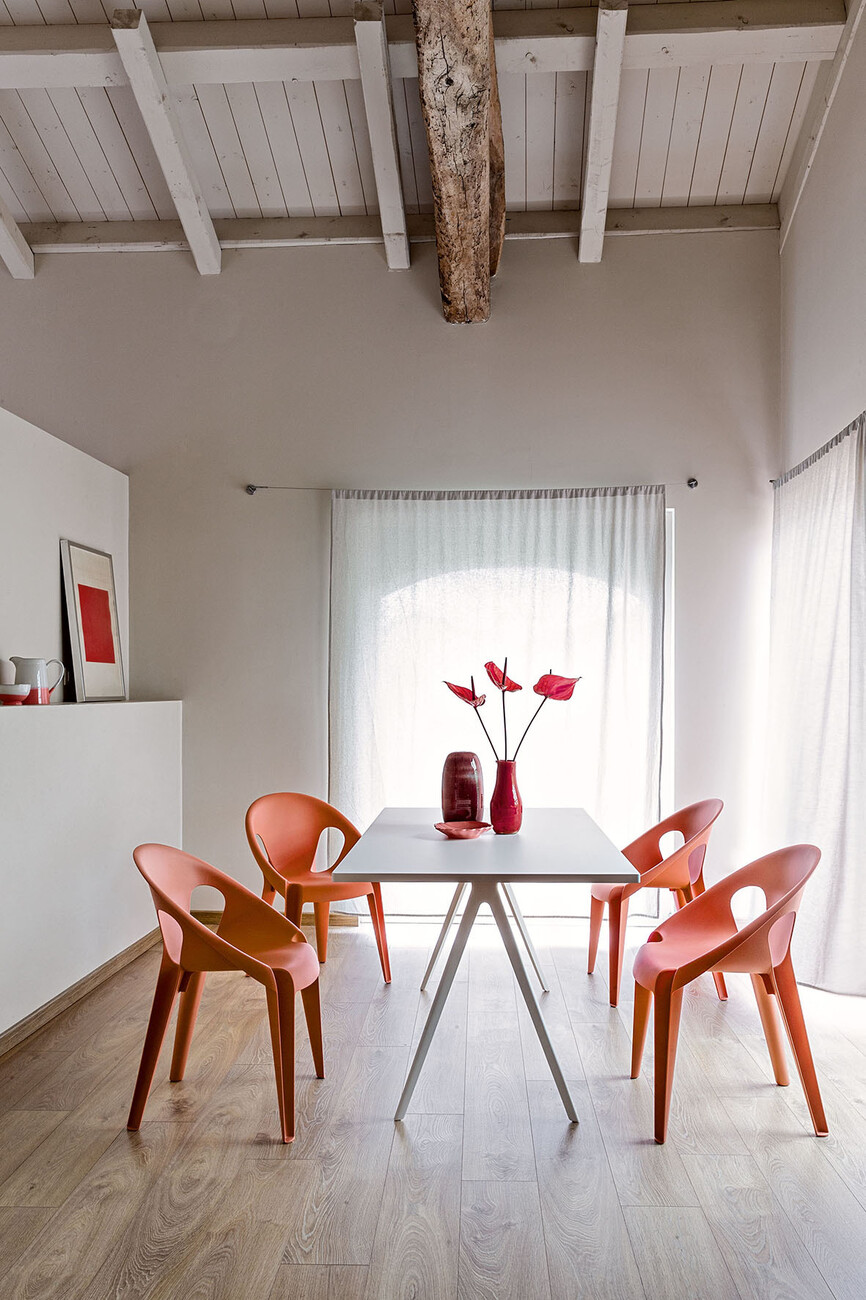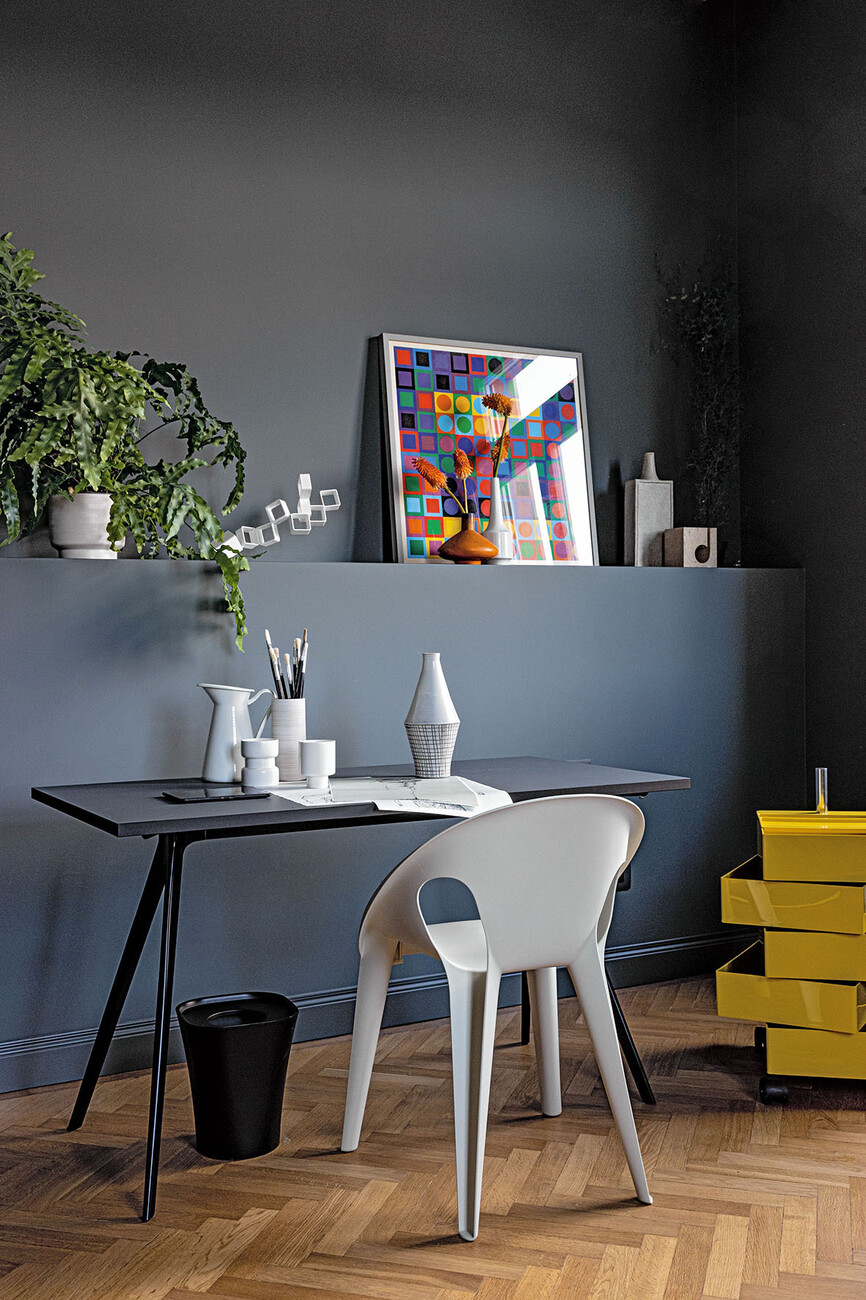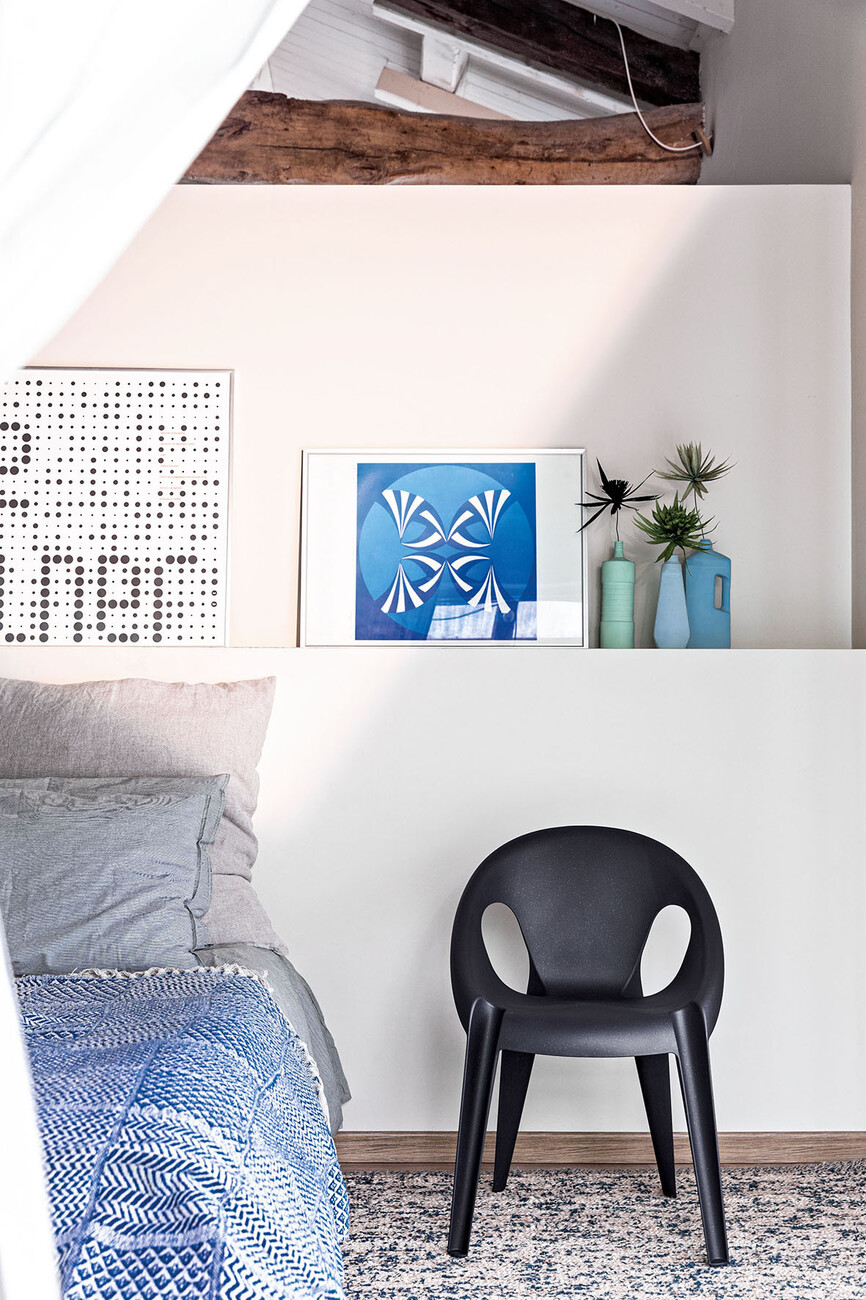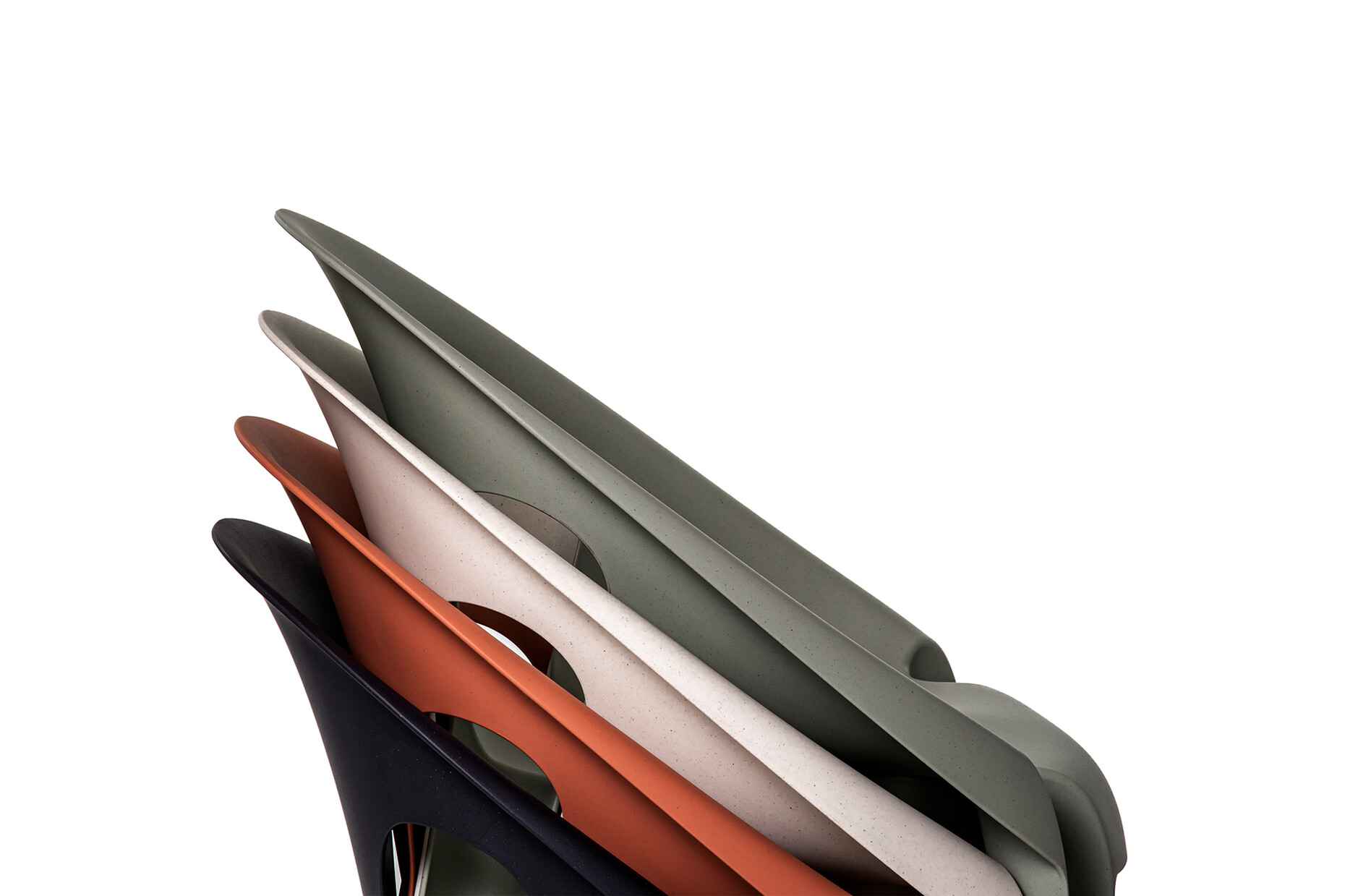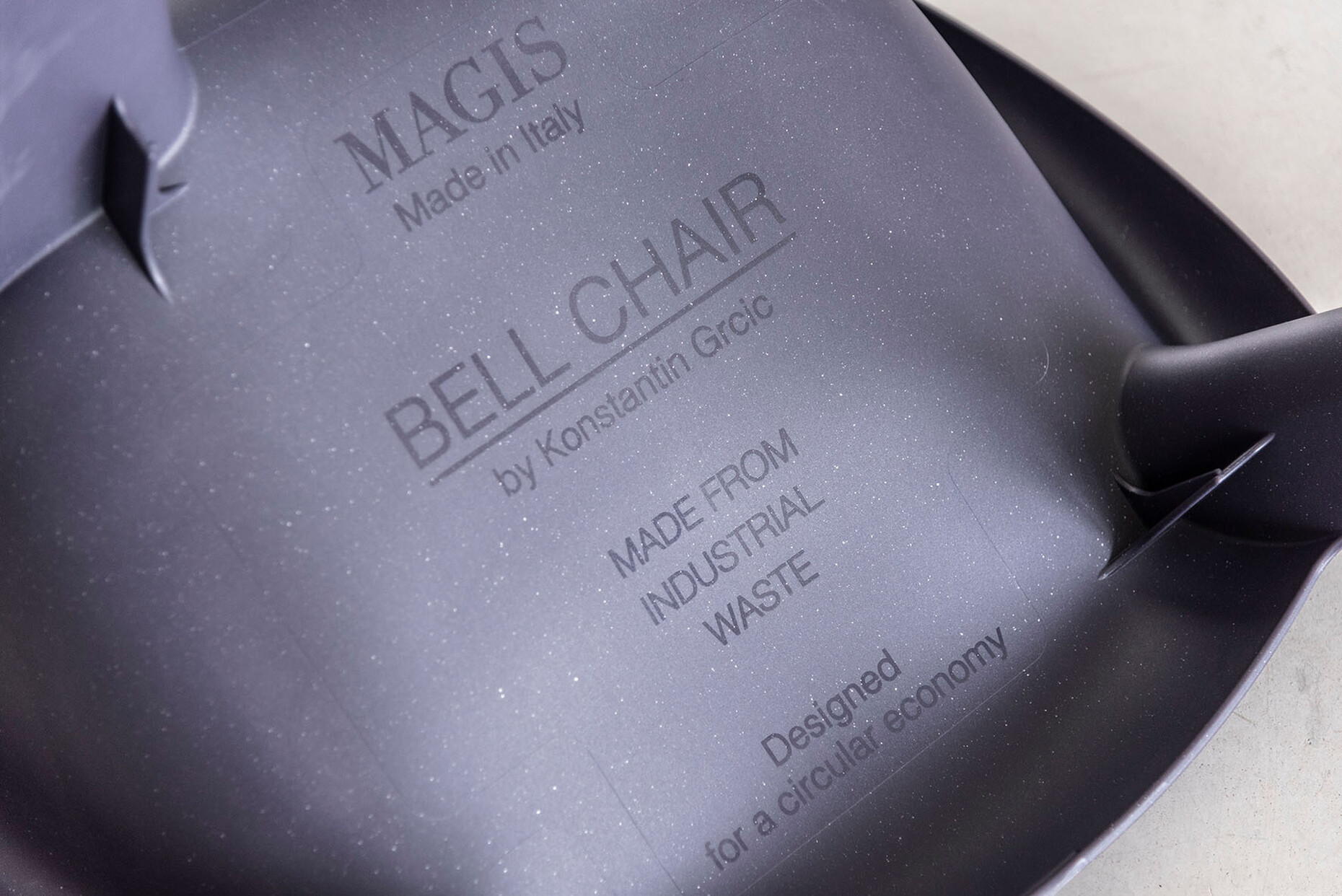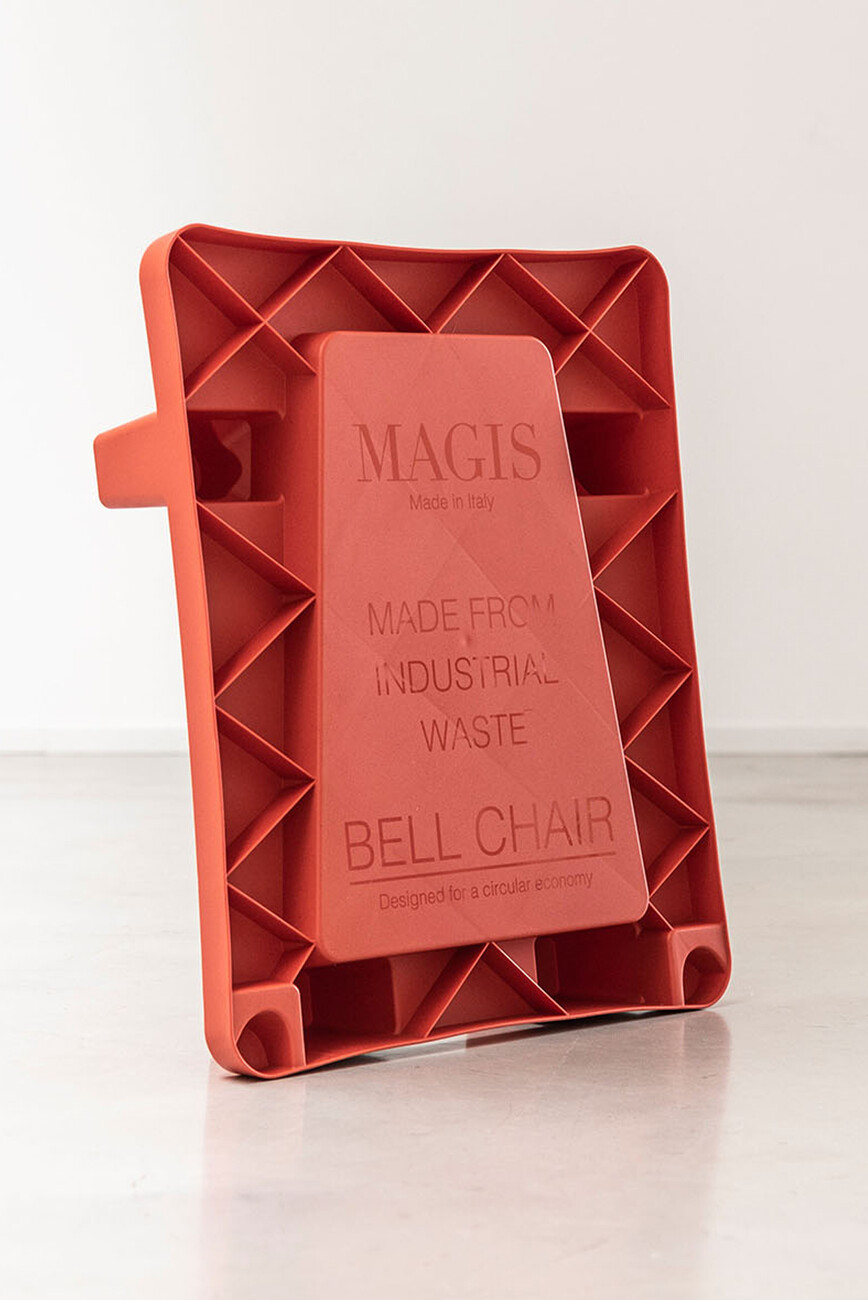A fitting addition
Anyone entering Frank Gehry‘s extraordinary Tour Luma building in the Luma Arles cultural complex will already have an opportunity to try it out: the “Bell Chair” designed by Konstantin Grcic for Magis in the new color Dawn, a soft shade of sage that harmoniously expands the color spectrum of the design. “The shade was already part of our original concept and, as a secondary complementary color, makes the current palette even more coherent,” says Grcic. In addition to Dawn, the “Bell Chair” is also available in the colors Sunrise, High Noon, and Midnight – soft, neutral versions of a light and dark tone as well as a shade from the red spectrum. Konstantin Grcic deliberately avoided bright primary colors when compiling the options: “With just a few pigments, the chair gains a different seriousness compared to the classic Monobloc,” he says. A way of reducing things to the essentials that is nevertheless holistically thought through. To make the production and storage of the chairs as efficient as possible, there are currently no plans to make any more colors after Dawn – aside from occasional special editions that is.
The “Bell Chair” is produced from recycled polypropylene, which is obtained from the waste created by Magis’ furniture production and by the local Italian automobile industry. The material functions largely without additives which would otherwise have to be newly manufactured. As a result, the “Bell Chair” is 100-percent circular. Produced with as few resources as possible, it is also a true lightweight: It weighs just 2.7 kilograms and is nevertheless longer-lasting and more robust than current models made of plastic. “The seat shell has a very round shape and that’s where it gets its stability. A soft, curved radius is more stable than angular edges,” explains Grcic.
For the both ecologically and economically efficient result, the designer teamed up with an engineer, who checked whether the aspiration to make a product that was efficient in every regard would be compatible with the creative ideas. It was a sober reality check that demanded a lot from Konstantin Grcic: “It was a very interesting experience to hold the reins in the design process and at the same time to let them go a little bit in order to follow the engineer’s calculations,” he says, adding: “The algorithm would put the project ‘stackable chair with minimal material use’ into a form that would be efficiency in the sense of solving a problem, but not in aesthetic terms. But the premise for durable products is that you want to live with them for as long as possible. Beauty is an aspect of sustainability.” After intensive calculations and deliberations, the perfect middle ground was found between unique form and comfortable function, and this also provides for low energy consumption in manufacturing. In keeping with this strategy, Magis devised a logistics concept for the “Bell Chair” that includes a reusable delivery pallet on which up to 24 chairs can be stacked and also presented. It is a carefully considered concept in every respect, with which the new Dawn shade of sage is in perfect harmony.

